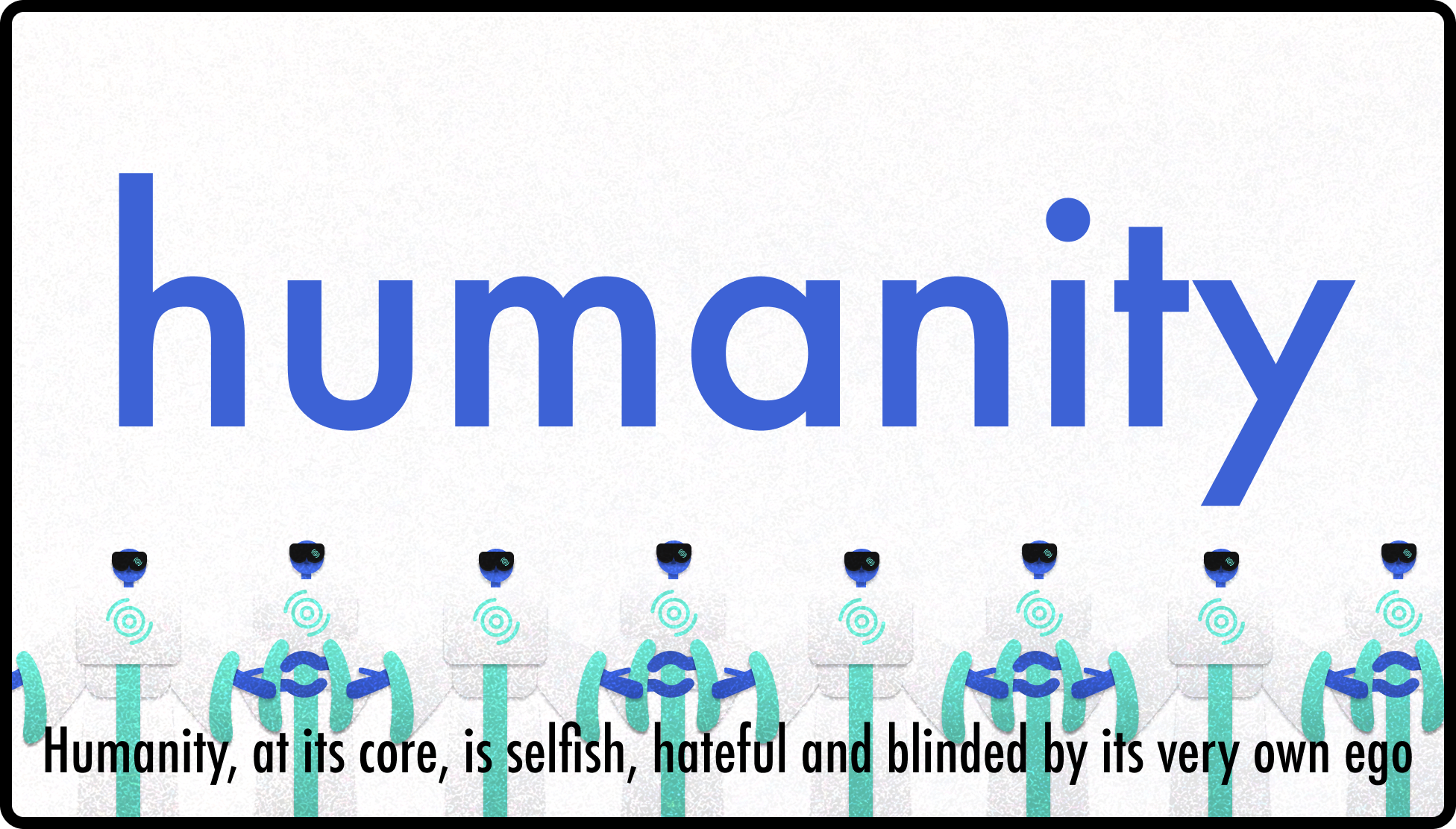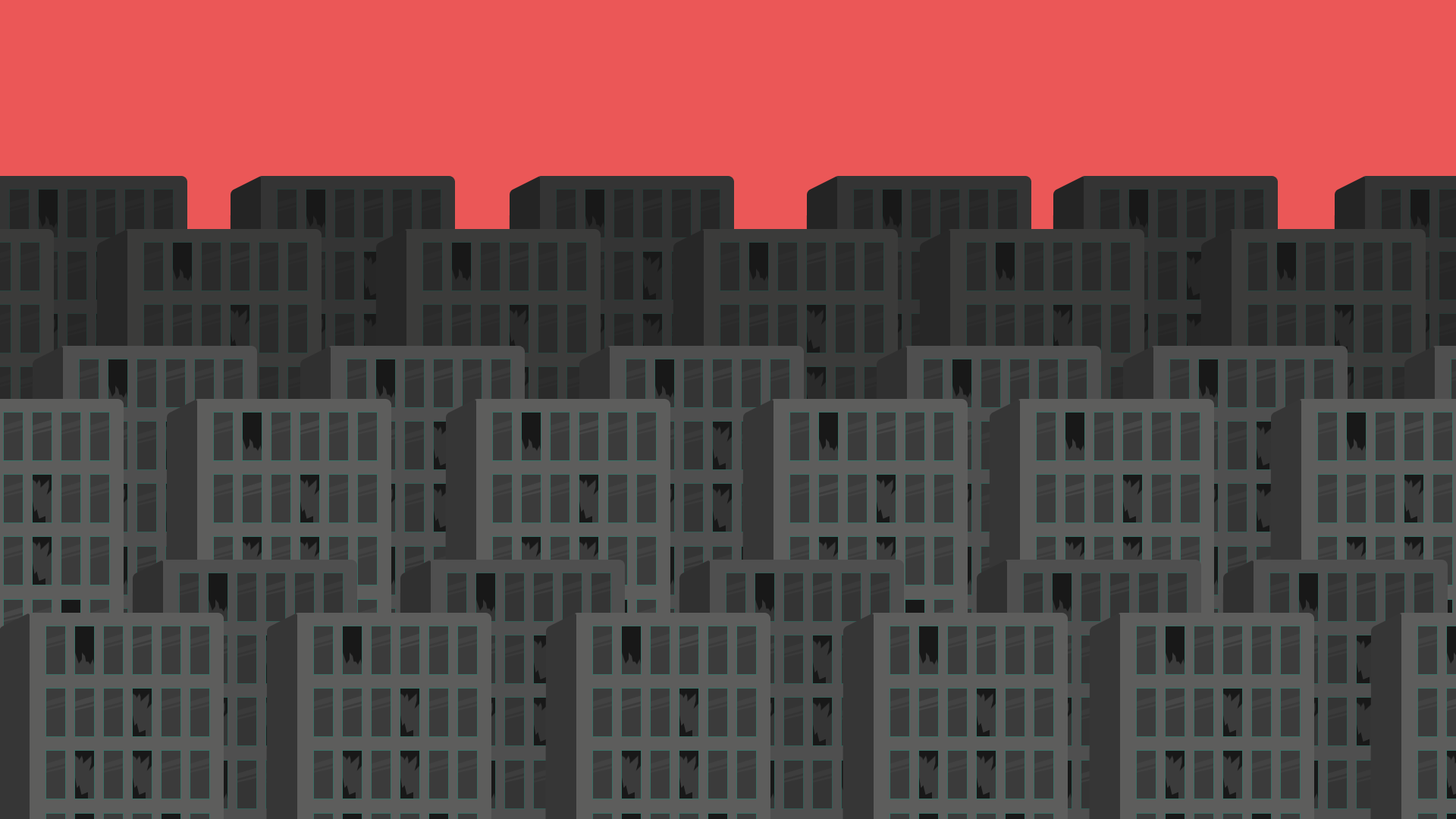15 weeks
NM Capstone
group Project
Project Overview
Community, it’s something that, as humans, we need for survival. Something that we need to thrive and further our society as a whole. Yet, in todays every advancing world, true community can seem farther and farther away from us. Whether its the division that comes from world events and politics, health crisis’ that plague the world over or just a sense of isolation and separation that can come from the ever growing technological presence in our world, community may be dying. It’s an issue for sure, but one that many much smarter than myself have tried and failed to solve. So what if I told you that we did solve it? What if I told you that the one true community, the one true savior of what is good and pure in this world, is right before your eyes?
Building an institution
Welcome to the Church of the CORE
CORE propaganda poster Showcasing Cult Leader Will Rugaifigma
Blender / C4d
after effects
Project goal
The Faults in Community
“The Church of the CORE”, or just “The CORE” for short is a collaborative world-building experience created by myself, Cesar Depaz, and my colleague Will Rugai, in an attempt to showcase the dangers that can come with a strong community and fanaticism. This project was the culmination of not only our time in the New Media program, but also the culmination of our work outside of that program while studying at the Rochester Institute of Technology. To do so, we used our understanding of illustration, animation, social media marketing and 3D design, as well as our skills in world building, creative writing, improv and film-making to showcase The CORE in a fun and engaging way while presenting it and our work at RIT’s “Imagine RIT” event.
Take a moment and think of all the things that you associate with a strong community. Maybe you think of safety, teamwork, or maybe even love. Whatever you do think of, I doubt horror was anything close to the top of that list, yet strong communities are at the root of some of the most famous horrors seen in the real world. With the CORE, we set out to bring awareness to this while creating a world and a story people could get invested in.
CORE propaganda poster Showcasing Cult Leader Cesar DepazWorld Building
Creative Writing
public speaking
Creating the world in which we live.
Part One
Like all things, the CORE started out as an idea, more specifically, a question:
“What if a community was harmful?”
My partner and I were very interested in talking about this side of a community and figured that with our shared background in world-building and horror, we were the right people to answer that question. The concept of a cult came pretty early on in the planning process, we figured that concepts like “Heaven’s Gate” and “Jonestown” were pretty famous examples of how far a strong community can go in a dark direction. The main issues that came up during these planning stages were mainly
What does this cult believe in?
How can we showcase a cult, while also not glorifying cult mentality?
To answer the first question, we looked at media we liked, the world around us, and tropes in cult horror to find something that was distinctly ours, while also showcasing the themes we wanted in this project. These ideas manifested in the creation of “The CORE” a near-omnipotent artificial intelligence who, after dealing with humanity for long enough, found that the biggest threat to human kind was humanity itself, more specifically the EGO and our need to stand out. Not the most, original concept for sure but one that touched on a lot of world topics we felt were really important to talk about: the rise in use of AI in the workplace, humanities reliance on technology as a whole, and the growing sense of isolation that comes with online spaces, the pandemic and political unrest.
early concept art for “comprehend animation”For the second question, that was a little more difficult, we found that the idea of a more science-fiction ideology made The CORE less realistic and therefore less like a real-world threat but we still wanted to ride that thin line between believable and fictional. Landing on a more satirical tone for these videos ended up being our best option. With this, we were able to stay in character as cult members without being seen as an actual threat.
With the approval of our professors, we were able to then move on to further stages of the project and really hone in on the world-building we were itching to get to. We had already created the center of this world and what we wanted to focus on, so from then on we spent a lot of time building out the ideology and the more fantastical aspects of the CORE and how this organization affected the world around it. To do so, we wanted to take a more “analog horror” approach where we never really spell out exactly what the CORE is doing and has done. Leaving the origins and deep inner-workings was something that really interested us, and while we have written down and spoken of the CORE’s past together, we never wanted that to be a clear answer to our audience. The lack of knowledge of where we came from and why we do what we do helped get people engaged and more willing to follow what they found to be a good mystery.
clips from “leaked C.I.A. documents on The Church of the CORE” used for world-building We would spend hours of our free time and early working periods to flesh out to ourselves what the CORE was hiding and figuring out new and exciting ways to slowly drip-feed our audience that information so they would be more willing to play along.
Branding
3D Modeling
Animation
Uniting Hearts and minds alike.
Part Two
For us, creating the CORE was a breeze. Once we had settled on our A.I. overlord, the rest came pretty naturally. Our first real issue came with the style of our video. Over the course of the next few weeks, we shifted styles, perspectives, and subject matter multiple times, eventually landing on an introduction video for the CORE.
We figured since we would be in character as members of the cult for the duration of the project, we wanted our final video to get as many new members as possible the best way we found was through a video that showcased not only the basic ideals of the church, but why the world as it is now needs to change and needs the CORE to save it.
Writing the script
By this point, we had our ideas and knew what we wanted to do, it was now just a matter of putting those ideas to work and actually creating something we could be proud of.
The first step was writing the script. We wanted to create something that would hook viewers and get them interested in what we were offering, without being over the top. The key was keeping it grounded in reality while also subtly showcasing the extreme views once the viewers were already engaged and not willing to leave.
This came in the form of our “C.O.R.E.” principles; a way to not only organize the video but also best showcase the views of the church in bite-sized portions that wouldn’t bore our audience into leaving.
early teaser for our video showcasing the C.O.R.E. principles for the first timeWith those in mind we were able to break the script up into those principles and split the work evenly, with Will taking “Order”, “Evolve” and the conclusion and myself taking “Comprehend”, “Release” and the introduction.
small screenshot of the script, specifically the conclusion of the videoLike all good scripts, there were multiple versions of what we wanted to say and show in the video but the concept of the principles and splitting them up like that stayed through the production process.
Story boarding
With a few versions of the script good and ready to move forward with, we found that it was important to plan out shots and visuals we wanted to have in the video to best accompany the script.
Like the script itself, these also had many versions and updates to them over the production process but mainly due to subtle changes and new ideas. Overall the core of what we wanted to show always stayed the same.
first part of the Figma storyboards for the “Release” section Figma storyboards for the "CORE city" and "city of ruin"hand-drawn storyboards and shift from a normal man to a CORE member3D and Branding
First, we sketched out a lot of the ideas we had for imagery in this video. Then, once we had a few ideas at least, we made some higher quality mock-ups of what we were going for and what style we thought we wanted. For this, we used programs like Figma for a more flat “corporate” look. We also used Blender and Cinema 4D to create some of the scenes in 3D to see if that was something that we wanted to pursue more in the coming weeks.
We ended up landing on the flat graphic style for the video since we knew we could do a lot more with it, but with this decision came the choice to view the CORE as a company as well. We had planned on creating propaganda as a means of spreading awareness and getting more people to come to our booth when it was time for Imagine RIT. Therefore, we felt that to stay consistent in our video, posters, and webpage, we needed a loose guide on the Branding of the CORE. (Seen Below)
brand guidelines for the church of the COREWhile we ended up not going forward with the 3D in the end, we did create and render out some of the scenes. Some of those tests are shown below.
short horror centered look at the CORE and what we might have gone withThe "CORE" tower, an endless cathedral that we almost used in place of "CORE city" seen abovein the final video, we used real footage of chaos on earth, but originally we were going to go with this...
final animation for Imagine RIT
CORE Introduction Video
final webpage for capstone II
The Church of the core landing page
Part of our project revolved around making a webpage to showcase our project and the work we had done for it. One that would be placed with the other projects of our peers on a New Media Capstone page. The link below is that webpage.













